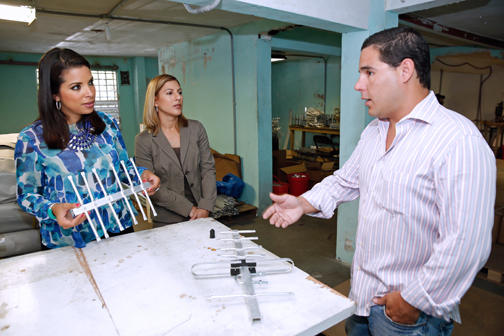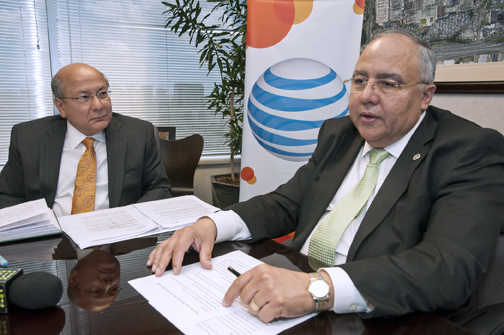Op-Ed: FCC, PR Telecom Board numbers paint drastically different pictures


Author José F. Otero is an industry expert who has participated in more than 200 market projects and reports focused on Latin America’s telecom sector.
Editor’s Note: This editorial is a translation and reprint of an article originally posted in the author’s personal website. His views do not reflect his employer’s opinions.
A key element in government transparency is the availability of information about its work. To be able to show citizens what initiatives have been undertaken to improve the quality of life for all and periodically publishing relevant information on the sector that is being regulated.
In this way, a more precise analysis of its evolution by the media, private specialists and academic researchers is feasible.
Without constant monitoring and analysis of the government function, it is impossible to note that it has been done correctly and should be emulated by other public entities. Nor would it be possible to identify when the work does not comply with what was initially proposed, or simply the discourse does not reflect what the figures say.
In other words, transparency in the reporting of statistics relevant to the regulated sector serves as a parameter to judge the performance of a regulatory body.
At present, there are few sectors that are as influential in a country’s economy as that of information and communication technologies (ICT). Under this umbrella we enclose everything related to the offer of voice, data and broadband access services by the general public as well as small- and medium enterprises and large corporations.
But this is just the beginning; the digitalization of the economy — that transformation of all the country’s productive segments — depend on ICT to increase their efficiency, giving way to greater productivity.
It is for this reason that in Puerto Rico’s post-Hurricane María reality, it is almost impossible to have a positive opinion of the island’s government efforts in relation to advances in the ICT sector for two main reasons.
From the lack of transparency in the announcements that have been made on topics ranging from the deployment of the Internet of Things to help the economy, to statistics on the recovery of the telecommunications system published by the Puerto Rico Telecommunications Regulatory Board (TRB), and that they differ from reports published by the Federal Communications Commission (FCC.)
Post Hurricane María data: FCC vs. TRB
The landfall by Hurricanes Irma and María in September caused unprecedented devastation to Puerto Rico’s basic infrastructure. Apart from the numerous questions that have arisen since the last of these atmospheric phenomena left the island (many of them documented here), the work of the government of Puerto Rico to inform Puerto Ricans (on the island and the diaspora) has been unfortunate.
Excuses and information that really says very little about the island’s reality is what has been shared for weeks.
Although the best known example is the disparity of the percentage of energy generated with the percentage of households with services, I will simply limit myself to the two figures referring to telecommunications that were available on Nov. 20 on the http://status.pr website.
The first criticism that can be made about the information provided is that there is no place where the definition of quantified terms is explained to the observer. Nor is there a breakdown by municipality of the data presented, which makes it lose value if we consider that about a third of Puerto Rico’s population resides in San Juan and the surrounding municipalities and, according to the FCC, so do a third of the island’s cellular antennas.
Here begins the first discrepancy — while in Puerto Rico the TRB says that there are some 2,671 cellular antennas in total, the figure from the stateside regulator is 2,696. Logic dictates that Puerto Rico should handle its information better. However, it is through the federal regulatory body that one can know the reality of the recovery of wireless telecom networks at the municipal level.
The news is not auspicious here, because by Nov. 20, only 30 percent of Puerto Rico towns (24 out of 78) had more than 50 percent of their cellular antennas working.
Again, the aggregate figures presented by the local government hide the seriousness of the situation for the populations that live in the island’s mountainous areas — which in their immense majority, more than two months after the passage of the hurricanes, have no electricity yet and have been told not to drink the tap water.
It should be noted that the information provided by the FCC tells us which towns are being covered by the Google probes (Loon Project) and which are served with cell on wheels (COW) units.
On the other hand, as previously mentioned, the TRB’s information is limited to giving a total of wireless antennas that differs from that offered by the FCC.
Cooperation agreements between PR, US not working
What is happening is definitely somewhat embarrassing, because beyond [a lack of] transparency, it shows that the cooperation agreements and the flow of information between the federal government and the colonial government are not working as well as we were led to believe by public officials in Puerto Rico and the U.S. mainland.
I would like to emphasize that while information on antennas by town lets us know that there is a minimum of connectivity, it does not reveal much about the real situation of the service that each user can access.
It is not the same to have access to Advanced LTE in mountain towns such as Utuado, Lares, Jayuya or San Lorenzo than in San Juan. It is not the same to barely have text messaging and mobile telephony than to be able to surf the Internet for videos alerting about emergencies on social networks.
All of the above considering that families without a power generator can have wireless coverage but many difficulties in recharging their mobile phone. Again, the poorest, those who need more help, are the most ignored by statistics that project a generalized reality that is not true.
The other statistic published by the TRB refers to telecom service, but combines wired and wireless services. In other words, the Puerto Rico regulator equates services that have a locality as an end user, with those that address an individual. The damages to wired networks do not compare with those suffered by the wireless networks; however, they are added up to show a better picture than the actual one.
Again the questions that should be asked to the U.S. territory’s government entity are: How is the situation by municipality? What percentage of the DOCSIS 3.0 network is working? How is broadband access per platform? Do you account for just access services or transport services also? What is the status of the submarine cables that land in Puerto Rico? How did the hurricane impact the growth of satellite services?
It is shameful that there are no available figures and the little data that is presented to us an insult to the intelligence of Puerto Ricans. And if there is an explanation, it is unforgivable that it is not presented to the public.
At the end of the day, public officials, as the adjective says, work for the people.








